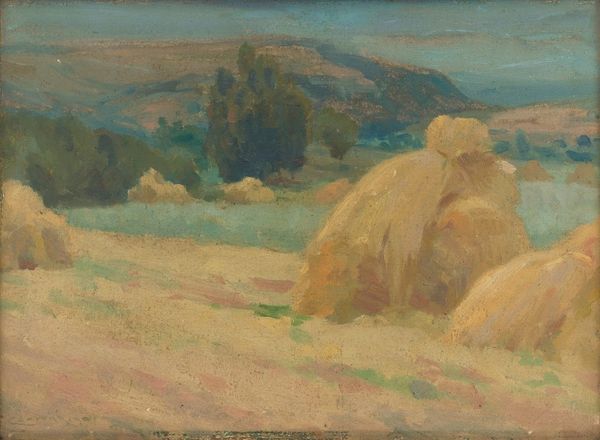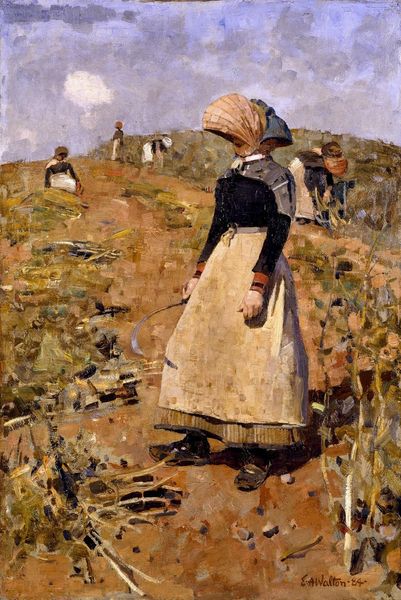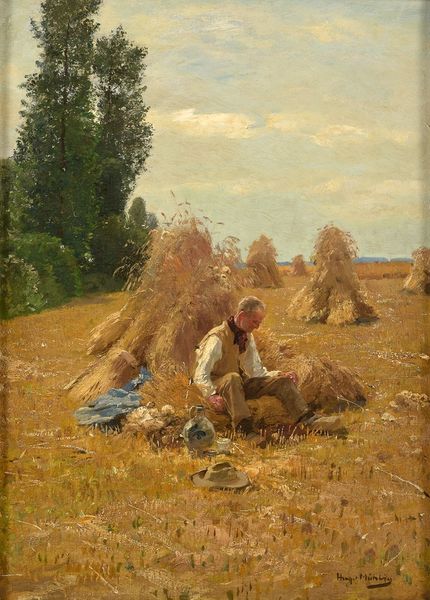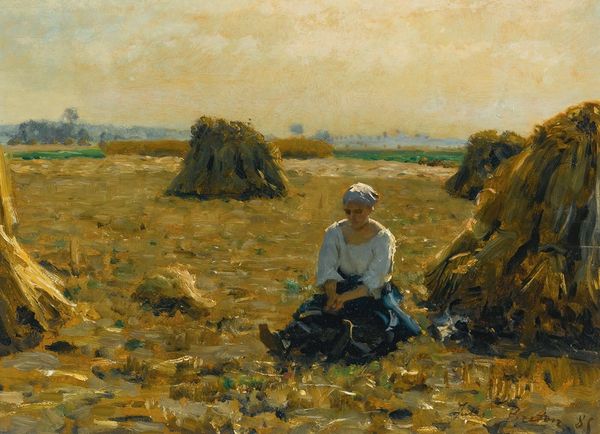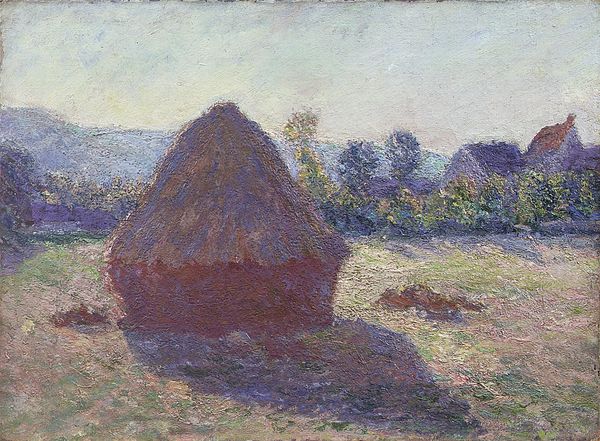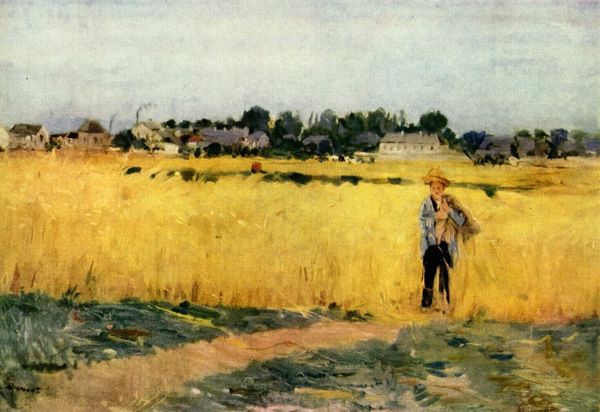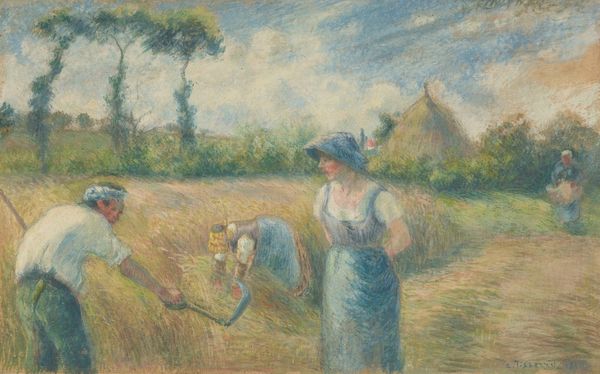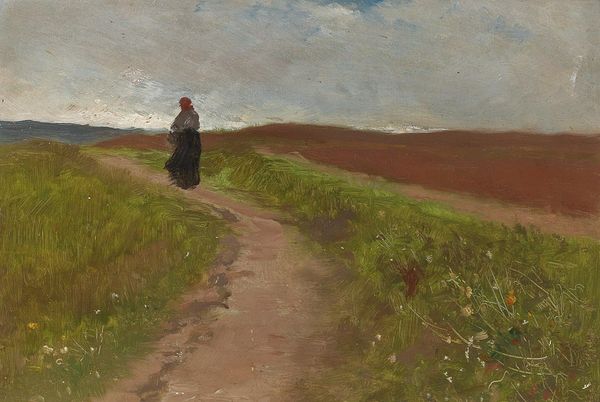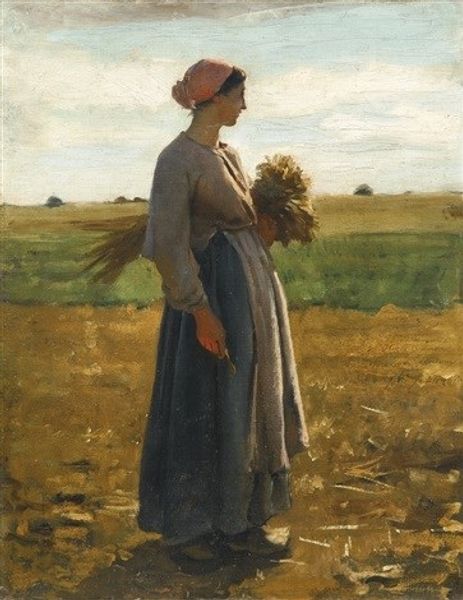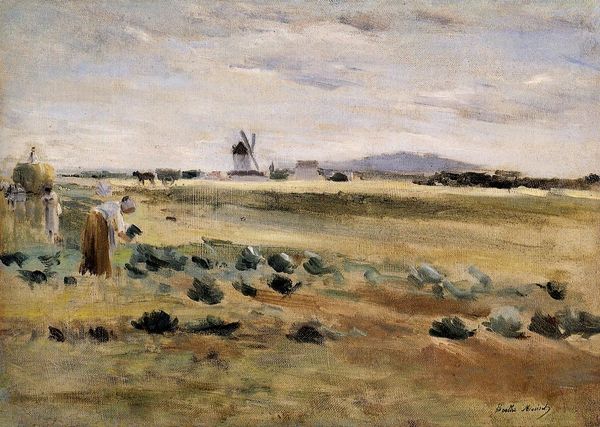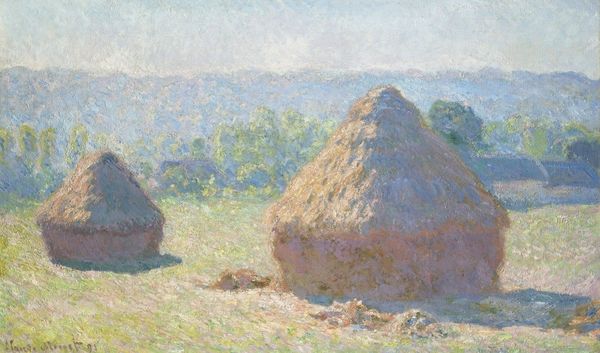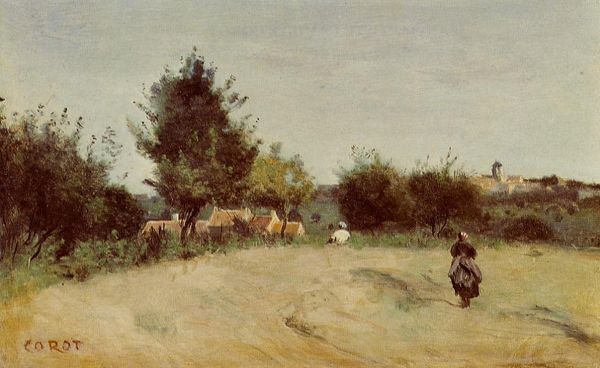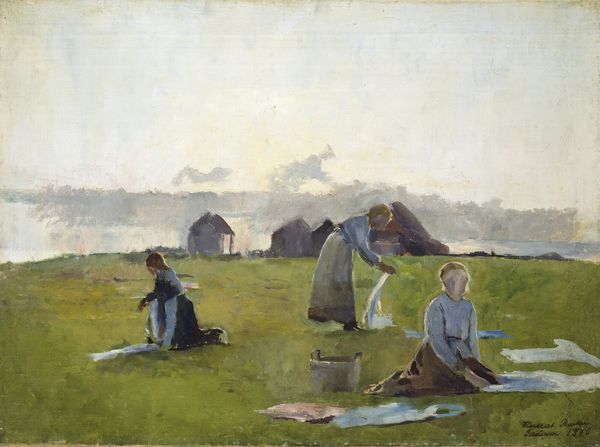
painting, plein-air, oil-paint
#
portrait
#
gouache
#
painting
#
impressionism
#
plein-air
#
oil-paint
#
landscape
#
underpainting
#
painting painterly
#
genre-painting
#
watercolor
Copyright: Public domain
Editor: Theodore Robinson's "Etude," painted in 1890, presents a genre scene rendered with oil paint. The first impression is of a quiet, contemplative moment in a golden field. There's a solitary figure of a woman; I'm really struck by her muted colors compared to the brilliant golds. What do you see in this piece? Curator: I see echoes of a dream, perhaps a sun-drenched memory clinging to the canvas. For me, "Etude" sings a song of rural life, a snippet of time viewed through an Impressionist lens. Look how the light catches those haystacks. They're not just objects; they're pyramids of summer's abundance, monuments to labor. Do you think the woman blends with the scene intentionally? Editor: That’s interesting! I hadn’t thought of the haystacks as "monuments". I think the woman is purposefully toned down – she’s part of the landscape. But does that make her powerful, or just… present? Curator: Ah, the conundrum! I think both can be true. Robinson might be suggesting her power resides not in domination, but in a deep connection to the earth. And her dress seems to echo the subtle hues of the sky, integrating her even further. A whisper rather than a shout, you see? What do you think of the loose brushstrokes? Editor: That's true. They are almost dissolving! So it seems like Robinson might be highlighting the interconnectedness between people and nature. I really see the depth of his vision now! Curator: Indeed! "Etude" is more than just a pretty landscape. It’s a poem etched in light and color.
Comments
No comments
Be the first to comment and join the conversation on the ultimate creative platform.
